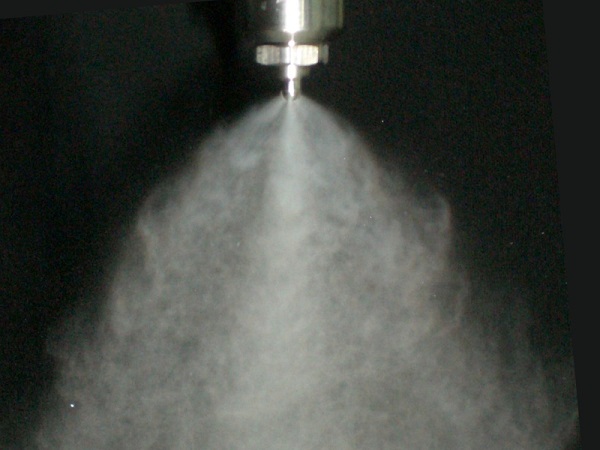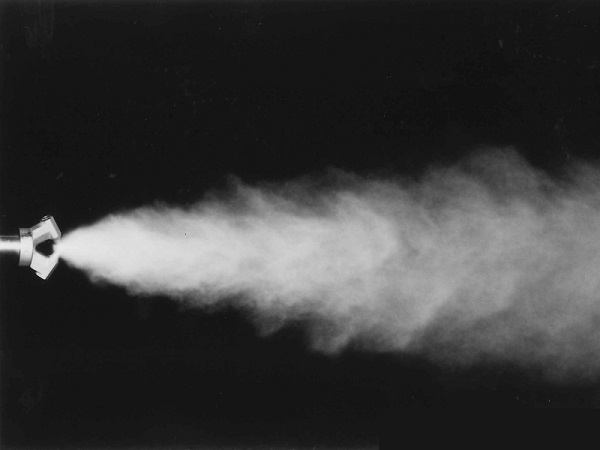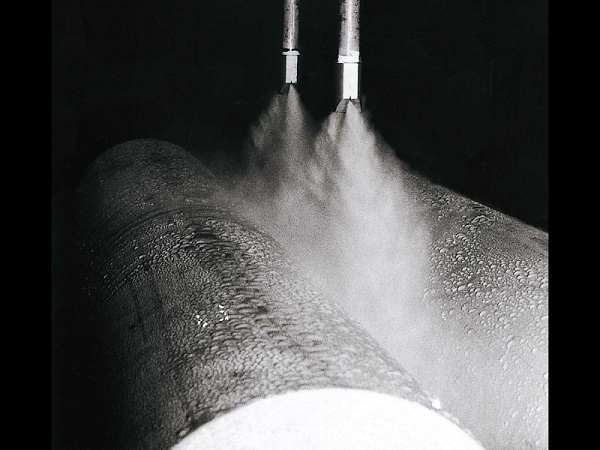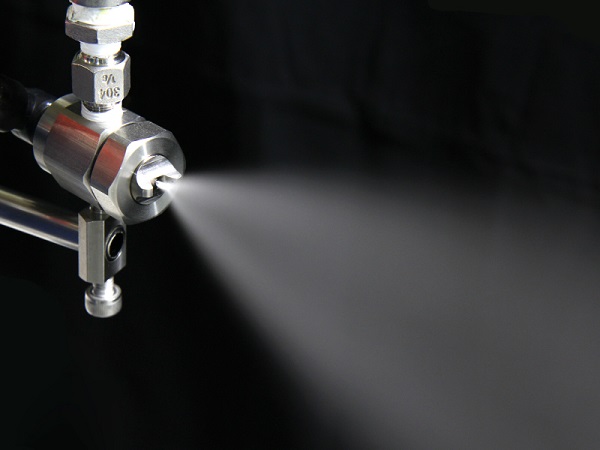Compressed Air Pneumatic Nozzles
Our pneumatic nozzles are divided into three categories depending on the way the air is supplied to the nozzle before being mixed with a liquid:
- compressed air pneumatic nozzles,
- air blower pneumatic nozzles and,
- special pneumatic nozzles (like steam driven).
Compressed air pneumatic nozzles are two-fluids nozzles. They use a high-velocity flow of compressed air that gives them different features compared to hydraulic nozzles. They are not to be confused with the compressed air driven nozzles, which are part of the air nozzles category. Most of the time, the air is used to break down the water in tiny particles, even smaller than what hydraulic nozzles produce. They can spray very small droplets down to 7 μm (micron), and they fit in an application where:
- fine atomization is required;
- A viscous liquid is sprayed;
- a large turn-down ratio is required;
- extremely small spray capacity is required.
Product classification:
We classify the compressed air pneumatic nozzles based on the mean droplet diameter:
- Small capacity – Fine Fog;
- Medium capacity –Fine Fog;
- Semi-fine fog – Light Rain;
- Clog-resistant pneumatic nozzles;
Major features of compressed air pneumatic nozzles
Besides distinguishing the nozzles based on their droplet sizes, the compressed air pneumatic nozzles have other features and characteristics that make them more appealing and suitable for a specific process, industry, or application. These can relate to factors such as:
- Air-liquid mixing systems;
- Liquid feeding systems;
- Spray patterns;
- Spray pressure;
- Spray Angle;
- Spray capacity;
- Spray distribution;
- Turn-down ratio;
- Air-water ratio.
The air-liquid mixing systems refer to the way in which the air flows and liquids mix before being sprayed out of the nozzle’s orifices (holes). There are three possibilities in which air can be mixed with a liquid:
- Internally: process of mixing the fluids in the interior of the nozzle;
- Externally: the process of fluid mixing happens in the exterior of the nozzle;
- Through impingement: the stream of air from one spray nozzle colliding (impinging) with another’s nozzle air stream, creating thus a finer, more uniform droplets (AKImist).
In the case of the liquid feeding system there are two options. One is the liquid pressure system that utilizes pressurized liquid, and the other one is the liquid siphon system, where the liquid is being sucked up by the compressed air
Moreover, a spray pattern can be an indication for the application that it suits best, as it can deliver optimum performance. The main spray patterns for compressed air pneumatic nozzles are:
- hollow cone spray: suitable for humidification, cooling gases, chemical reactions and moisture control;
- full cone spray: suitable for humidification, cooling gases, chemical reactions and moisture control;
- flat spray: indicated for cooling and coating;
- film-like spray (slit or knife): indicated for cooling and coating;
Spray capacity, or the spray flow rate, is the water volume flow rate sprayed by a nozzle. Pneumatic nozzles are renowned and capable of producing a spray capacity as small as 0.1 L/h.
Furthermore, an advantage of pneumatic nozzles compared to hydraulic nozzles, is that they enable users to obtain large turn-down ratios, by adjusting both air and liquid pressures, making them more suitable for applications such as: cooling combustion gas. This assists in deliver a higher spraying impact, e.g.: VVEA has a spraying 2,5 times higher than hydraulic nozzles.
Regarding the air-water ratio (volume of air and water): this is rate is calculated by dividing the spray capacity to the rate of air consumption.
One thing that you should consider is the energy consumption of the compressed air cost. Moreover, ensuring that the installation and implemented nozzles are of a high quality, can be a cost-saving factor.
IKEUCHI, as an industrial manufacturing innovator, can also provide portable spray unit systems that contain pneumatic nozzles, which can spray being attached to an air compressor hose. Click here to learn more about this product.
To encounter the droplet size, spray capacity, spray pressure, spray angle and spraying distribution, the data has been added on the individual page of each product. For additional or specific information please do not hesitate to contact one of our representatives.
At IKEUCHI, we have determined the fundamentals to select the right nozzle for your application based on their characteristics. When selecting the nozzle, we advise you based on your required spray angle, spray capacity, optimum spray pattern, and spray distribution.
If you have technical question about nozzles, need advice to choose, or request a quote,




